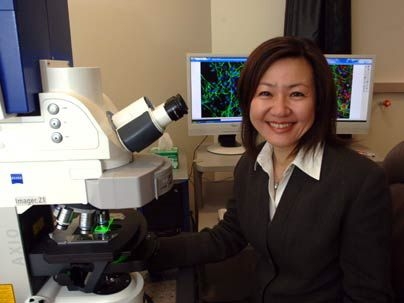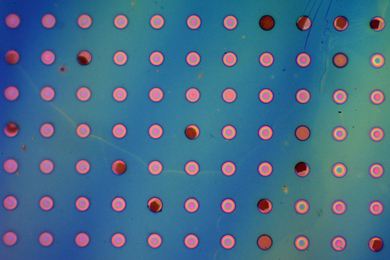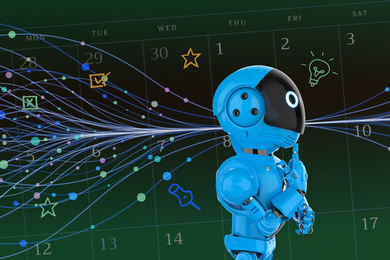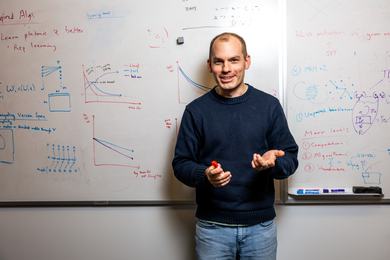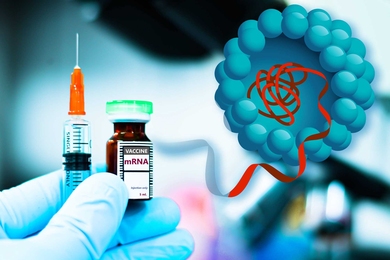Mice whose brains had atrophied like those of Alzheimer's disease patients regained long-term memories and the ability to learn after living in an enriched environment, researchers at MIT's Picower Institute for Learning and Memory report in the April 29 advance online edition of Nature. The same results also were achieved with a new experimental class of drugs.
Li-Huei Tsai, Picower Professor of Neuroscience in the Department of Brain and Cognitive Sciences, and colleagues found that environmental enrichment--for laboratory mice, being exposed to stimuli that enhance their physical and psychological well-being--induced the animals' brain cells to start to sprout new connections.
"This is exciting because our results show that learning ability can be improved and 'lost' long-term memories can be recovered even after a significant number of neurons have already been lost in the brain," said Tsai, who is also a Howard Hughes Medical Institute investigator. "This hints at the possibility that cognitive function can be improved even in advanced stages of dementia."
What's more, the researchers' results help explain why even severely afflicted patients are occasionally lucid.
Master regulators
Tsai's team was also able to mimic the effect of living in an enriched environment by treating the Alzheimer's-like mice with histone deacetylase (HDAC) inhibitors. HDACs are a family of 11 enzymes that seem to act as master regulators of gene expression. Drugs that inhibit HDACs are in experimental stages and are not available by prescription for use for Alzheimer's.
Proteins called histones act as spools around which DNA winds, forming a structure in the cell nucleus known as chromatin. Histones are modified in various ways, including through a process called acetylation, which in turn modifies chromatin shape and structure. (Inhibiting deacetylation with HDAC inhibitors leads to increased acetylation.)
Certain HDAC inhibitors open up chromatin. This allows transcription and expression of genes in what had been a too tightly packaged chromatin structure in which certain genes do not get transcribed.
There has been exponential growth in HDAC research over the past decade. HDAC inhibitors are currently being tested in preclinical studies to treat Huntington's disease patients. Some HDAC inhibitors are on the market to treat certain forms of cancer. They may help chemotherapy drugs better reach their targets by opening up chromatin and exposing DNA. "To our knowledge, HDACs have not been used to treat Alzheimer's disease or dementia," Tsai said. "Future research should address whether HDAC inhibitors will be effective for treating neurodegenerative diseases."
A better model
Brain atrophy occurs during normal aging and is an early feature of neurodegenerative diseases that affect learning and memory. Until recently, there were no effective animal models for these diseases, limiting researchers' ability to explore strategies for recovering learning and memory after substantial brain damage had already taken place.
Tsai's laboratory developed a transgenic mouse in which expression of p25, a protein implicated in various neurodegenerative diseases, can be switched on or off with a change in diet. Mice that expressed the p25 protein had significant loss of brain cells and acted as though they did not remember tasks they had previously learned.
"It's not clear if memories were simply lost or became inaccessible due to synaptic and neuronal loss," wrote Tsai. "In the latter case, it might be possible to reestablish the access to such memories if sufficient refinement of the neuronal network can be achieved by the remaining neurons."
In 2003, a man who was barely conscious for nearly 20 years regained speech and movement at a Mountain View, Ark., rehabilitation center. Last year, doctors said the man's brain spontaneously rewired itself by growing tiny new nerve connections to replace the ones cut in a car crash. Tsai said the case provides evidence that reestablishment of a neural network may allow recovery of long-term memories in humans as well as rodents.
Using the transgenic mice, Tsai and Picower research affiliates Andre Fischer, Farahnaz Sananbenesi and Xinyu Wang and technical assistant Matthew Dobbin set out to see if they could boost the plasticity--the ability to change--and the function of the animals' remaining neurons.
Enriching environment
Environmentally enriched (EE) mice have shelves, perches, nesting material, tunnels and other objects in their habitats and are allowed to touch, see, hear or smell other mice. The mice may get opportunities to exercise or learn tasks. Neuroscientists use EE to increase synaptic function in rodents, but no one is sure how or why it works.
In the Nature study, groups of genetically engineered mice were trained for four weeks before neuronal deficits were induced by turning on p25.
Despite the substantial loss of brain cells in the mice, the researchers found that environmental enrichment or elevated histone acetylation resulting from treatment with HDAC inhibitors helped the mice recall maze tasks and other behaviors they had learned weeks before.
The fact that long-term memories can be recovered by environmental enrichment or elevated histone acetylation supports the idea that apparent memory "loss" is really a reflection of inaccessible memories, Tsai said. "These findings are in line with a phenomenon known as 'fluctuating memories,' in which demented patients experience temporary periods of apparent clarity."
Tsai said, "We really hope that our results will lead to a suitable therapeutic approach to treat dementia. However, the immediate next steps are to determine which HDACs regulate distinct forms of synaptic plasticity, learning and memory."
This work is supported by the National Institutes of Health.
A version of this article appeared in MIT Tech Talk on May 2, 2007 (download PDF).
